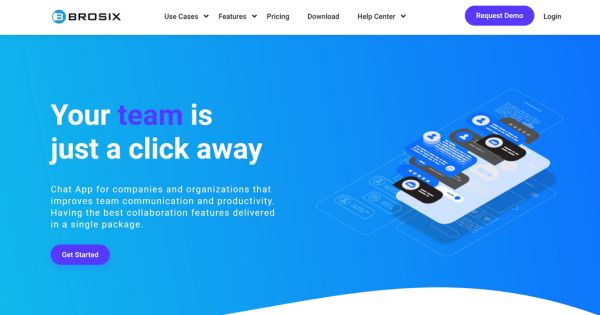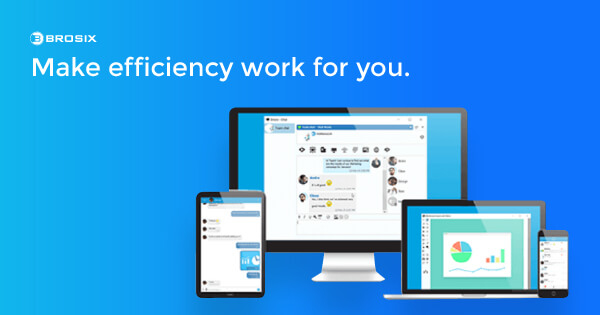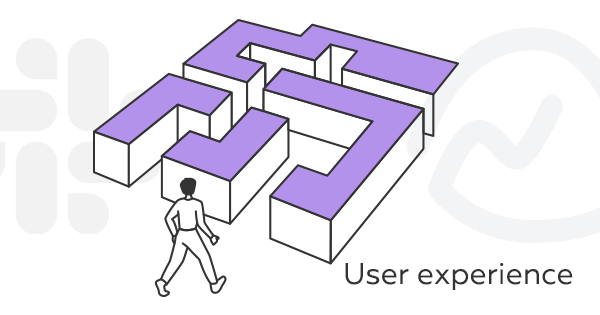Today, effective and efficient communication and project management are key to ensuring productivity in the workplace.
In addition to some useful tips, like how to reduce multitasking, improve communication, and maximize downtime, a whole host of tools exist, each to help you improve workplace processes.
No doubt, Slack and Basecamp are two of the biggest, boasting nearly twelve million users between them. And while their popularity is a testament to their effectiveness in the workplace, you may be undecided on whether or not they’re the right solution for your enterprise. That’s because, like any tool, Slack and Basecamp come with both pros and cons.
Choosing a tool shouldn’t be based solely on name recognition or the number of users on the platform, especially when it can alter key workplace processes like communication and teamwork.
So where does that leave us, then? Below, we’ll do a deep dive, first looking at Slack and Basecamp, including their advantages and disadvantages.
Then we’ll have a look at a third option, Brosix Instant Messenger, to find out where it fits into the equation, if it fills any of the voids left by the others, and whether it can meet your team communication and collaboration needs.
Slack vs. Basecamp: The Lowdown
Slack or Basecamp? That’s not an easy question to answer. Read below to determine whether Basecamp is the better choice or if you should opt for Slack. Or maybe there’s another option worth exploring?
Cost
Right off the bat, Slack offers a freemium version, albeit with restrictions like limited storage, message histories, and custom app integrations.
Beyond that, Slack charges per user and operates on a four-tiered pricing plan: Free, Pro at $7.25 per month, Business+ at $12.50 per month, if billed yearly, and Enterprise Grid at a custom price.
Basecamp, on the other hand, doesn’t offer a freemium version but has two pricing plans: Basecamp at $15 per user per month and Basecamp Pro at $299 per user per month, if billed annually. Interested parties, however, can try the platform for free for 30 days.
Basecamp Personal is a free version of Basecamp designed specifically for freelancers, students, families, and personal projects. Currently, it’s closed while a few experiments are being conducted.
Deciding on the more cost-efficient option ultimately depends on the number of users to whom you’ll be providing access to the platform.
Furthermore, iOS and Android users can use and download both the Basecamp and Slack mobile apps, although they come with some limitations.
Getting started
Getting started with both tools is pretty painless. Registration is a 5- to 6-step process in which you start by signing in with your email address and then continue with your name, company name, and job title.
No credit card info is needed in the freemium version of Slack or Basecamp’s thirty-day free trial.
Slack, however, will require you to check your email for a confirmation code, as well as create a workplace name. Both tools allow you to invite your teammates to join from the get-go.
From there, landing on the platforms’ homepages provides you with two different onboarding experiences. Visual learners and fans of video content will appreciate Basecamp’s comprehensive and worthwhile introduction video.
While Slack won’t provide you with an introduction video, it will greet you with the Slack bot. You can chat and either ask questions or query by keywords.
User experience and interface
The two platforms’ layouts vary quite a bit. Basecamp’s Home Screen has been redesigned for a simplified layout, featuring HQ, Teams, and Projects in the same place. It now includes 12 slots for recent teams and projects, allowing users to pin items and reorder them.
Slack has introduced a new window feature allowing users to open separate windows for multitasking, despite some users retaining the split-screen view’s productivity benefits.
Basecamp prides itself on its quick setup, user-friendliness, and overall ease of use. However, in some instances, it has been described as too simplistic, lacking basic task management features such as time tracking.
Navigating Slack, meanwhile, takes some getting used to, as many of its features are hidden behind buttons. Slack does let you customize the color bar, though.
Task management
Basecamp is a project management tool, and as a result, you’d expect it to have a leg up on Slack.
Basecamp’s top feature for project managers is the To-do lists, within which you can create projects and assign tasks to your team members. You can also specify due dates and attach notes and files. Basecamp, however, fails to deliver built-in time-tracking capabilities.
As a communication-first tool, Slack doesn’t feature task tracking. However, there are Slack integrations with task management tools like Asana or Trello, for instance. By creating Actions, you can track tasks from initiation to completion without leaving the app.
Communication
Unlike Basecamp, Slack is purely a communication tool.
You can use Slack channels, public or private, and organize them in any way you see fit, by team, department, or project, for example. Chats can then be further broken down into threads, which allow you to respond directly to a message in a channel. Slack also supports video and audio calls.
Slack has come under criticism for being both addictive and distracting. If you’re not careful, the endless threads, GIFS, memes, and notifications can end up hindering concentration, unlike the more structured approach you’d get if you used Basecamp.
While Basecamp doesn’t support audio or video calls, it does provide multiple mediums for team communication.
Campfire, or Basecamp’s group chat, allows you to chat in real time and also attach files, code snippets, audio and video files, emojis, and more with your HQ, team, or project. Basecamp also provides a platform for direct messages and message boards, as well as the ability to comment on To-Dos.
Integrations
Perhaps Slack’s biggest selling point is its long list of integrations. The tool integrates with over 2,000 apps and platforms, such as Jira or even Basecamp. The freemium version does limit you, however, to just ten integrations.
Basecamp, being a paid platform, doesn’t limit your integrations per se, making it easier to use Basecamp for a variety of project management tasks, such as creating Gantt charts. However, it features significantly fewer than Slack. If you want to boost the number of tools and apps to which you can connect, you’ll need a separate tool like Zapier, and from there, things can start to get tricky.
Documents and storage
Both platforms limit you on file storage. On Slack’s freemium version, you’ll get just a minuscule 5GB per team. On paid, plans you’ll get a bit more, but that’s capped at 20GB per user. What’s more, the size limit for uploading a file is 1GB.
Basecamp allows for a maximum file size upload of 10GB for both the free and paid versions. This provides users with ample flexibility in sharing files within Basecamp. You can also link to files from different storage platforms, color-code them, and sort by date and time. Basecamp’s cheaper version comes with an impressive total file storage of 500GB.
Search
With either tool, there’s no need to waste valuable time scrolling through thousands of messages.
Slack allows you to search by person, channel, time, or even by snippets of text within an attached document, though the freemium version will limit you to 10,000 messages.
In Basecamp, you can more effectively define a query by searching by Team or Project, and there’s no specified message history limit. However, there’s no option to search by time.
The lowdown
Basecamp and Slack both serve as productivity centers. Basecamp is a tool that allows smooth project management, while Slack lets you enhance communication in the workspace. Both tools come with pros and cons, meeting some individual and team needs while overlooking others. Ultimately, the tool you choose depends on the specific needs and functions of your team(s).
That said, if you’re not keen on shelling out big bucks on tools that, let’s face it, have their share of flaws, there could just be a third option out there capable of solving your team’s communication and collaboration needs.
Meet Brosix

If you’re looking for a tool that could be a Basecamp or Slack alternative, Brosix might be the right fit for you. Brosix is a real-time communication and collaboration solution for teams of all types and sizes.
Brosix combines effective communication channels, robust IM features, and industry-leading security protocols over a private team network to streamline teamwork and safeguard company data across one central platform.
Pricing
In terms of pricing, Brosix is one of the more affordable solutions on the market. It comes in three versions: Startup, Business, and Premium, each tailored to different enterprise users.
The Startup plan is available for free. For just $4.00 per user per month, the Business plan offers an assortment of communication and collaboration tools like text, voice, and video, as well as unlimited-size file transfers, screen sharing, and some limited administrative options like the ability to manage contacts and features.
At $6.00 per user per month, the Premium plan offers all the bells and whistles, or the full range of communication and collaboration tools, including comprehensive enterprise and administrative features.
For those looking to test drive the platform, Startup is Brosix’s freemium option, offering text chat, co-browsing, and a virtual whiteboard, along with some limited enterprise features. Brosix also offers a free mobile app for iOS and Android devices.
Getting started
Like its competition, Brosix makes it easy to get started. Simply sign up on the landing page with your email address. You’ll also need to provide your name and phone number, as well as create a company or team name and a password.
Brosix doesn’t do onboarding by way of bots or a how-to video. You do get an instructional email explaining the product, key features, and how to get the most out of the service.
The site also provides a tutorial section featuring loads of video content, as well as a comprehensive FAQ page.
User experience and interface

One of the first things you’ll notice upon signing in to Brosix is its simple yet classic interface.
When the end goal is efficient and effective communication, you can’t go wrong with straightforward, and Brosix takes this to heart. The result is an intuitive user experience that’s easy to navigate for first-time users and non-techies.
Chats are organized on a user basis on the left side of the screen. In-messaging access to voice and video chats and collaboration tools ensures communication and teamwork are never more than a click away.
Communication
When it comes to real-time communication, one of the drawbacks is that you’re always just an IM away, regardless of your availability setting. Factor GIFs and memes into the equation, and workplace communication can quickly spiral off-topic and out of control.
While Brosix is a communication-first platform, its emphasis on effective team communication makes it less noisy and intrusive than Slack, for instance. Make no mistake, though, by no means does the platform skimp on communication features.
You’ll get text chat for one-on-one conversations, chat rooms to organize your group communication, as well as crystal clear voice and video chat for those occasions when in-person communication is logistically impractical or impossible—for example, with your remote teams.
Another handy feature, Broadcast messages, facilitates quick knowledge and file sharing and, by removing the ambiguity of whether a response is warranted, preserves the productivity of workflows.
Top tools and features
Brosix provides a number of useful tools to streamline collaboration, picking up the slack where the competition falters.
Whereas Basecamp and Slack both restrict you on file size uploads, Brosix’s unlimited size file transfer never limits uploads, neither by size nor volume. What’s more, by utilizing peer-to-peer technology, Brosix better safeguards and streamlines the process of data transfers in many instances.
Brosix does offer a storage solution, albeit at the moment for images; though there are plans to roll out more flexibility in sharing options with future updates. Upon sending an image, users have the option to share the file or transfer it directly via a peer-to-peer channel.
Brosix also provides a native whiteboard solution capable of enhancing voice or video chat and turning ordinary tasks into collaborative processes—think brainstorming sessions or revisions and editing, for example.
In addition, remote desktop and instant screenshots not only make possible remote troubleshooting, training, and customer support, but also boost the engagement factor of presentations, demonstrations, sales pitches, and overviews. And that’s something Basecamp lacks.
Both Basecamp and Slack provide searchable message histories. Basecamp, however, doesn’t allow you to search by date, and that’s inconvenient if you only remember when the conversation took place. Slack’s freemium version, on the other hand, limits the searchable message history to 10K messages.
Brosix’s chat histories are searchable by keyword, colleague, and date, and aren’t limited based on your version of choice unless you’re on the Startup plan. Chat history archives, meanwhile, provide important oversight of the network and keep you current with regulations.
Multi-layer protection
As such, its comprehensive enterprise functionalities give it a leg up in areas that competitors often neglect. Features control, contact management, and chat room controls allow for the delegation of features on a user basis, customization and management of contact lists, and governance of team chat spaces.
Furthermore, communication and collaboration across the platform take place over a wholly private instant messaging network utilizing industry-leading security protocols like peer-to-peer communication channels, end-to-end encryption, and anti-virus and malware integration.
How does Brosix stack up against Basecamp and Slack?
Brosix is, first and foremost, a communication hub. As such, it doesn’t offer the integrations of Slack or the robust project management software features that Basecamp offers, such as task tracking.
Some will undoubtedly view that as a shortcoming. But Brosix’s practical nature minimizes the learning curve that often comes with new software. That means you’ll spend more time communicating, collaborating, and delivering results, and less time figuring out complicated configurations and integrations.
The Takeaway
Slack and Basecamp are both worthy tools. For evidence of this, look no further than their deep user bases or nifty features to enhance communication and make managing projects easier.
That said, there are criticisms of both: Slack for its intrusive nature and Basecamp for its inability to track time.
Brosix, on the other hand, isn’t without its own flaws – for instance its lack of integrations.
Ultimately, you’ll need to examine your individual and team needs and then decide which one provides better value for you. If all you’re missing is a task-tracking tool, Basecamp may be a better bet. But if your workplace communication and collaboration needs are lacking, Brosix deserves to be on your radar.
Brosix’s enterprise nature, comprehensive administrative features, and careful attention to security not only better focus and safeguard communication and collaboration, but do so without the noise, distractions, and hit to your budget.








